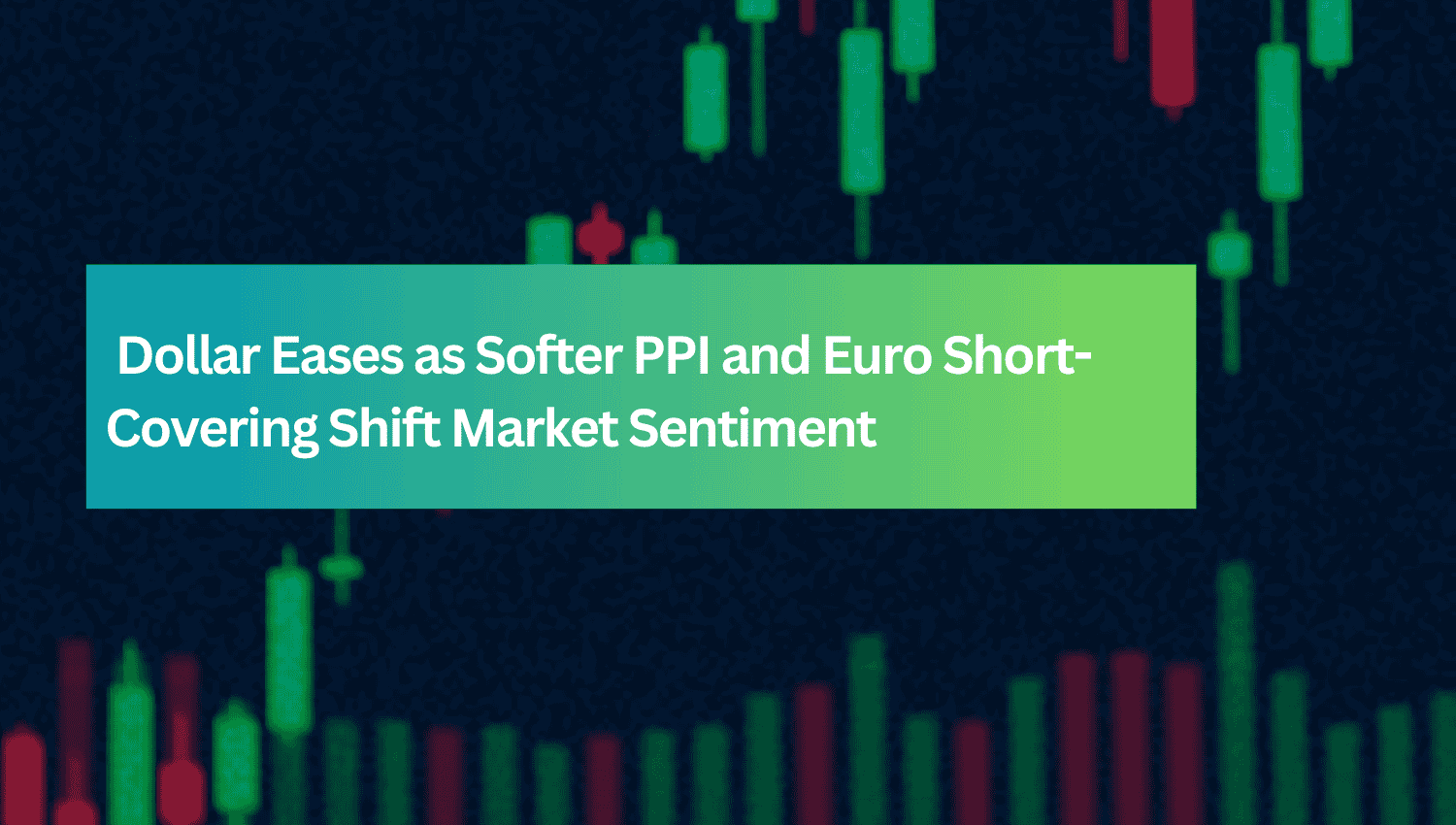Dollar Retreats from Two-Year High Amid Softer Yields and Inflation Data

The dollar index pulled back on Tuesday from Monday’s two-year high, pressured by easing U.S. Treasury yields and short-covering in the euro following weaker-than-expected U.S. producer price index (PPI) data. Core PPI for December came in flat, signaling easing inflationary pressures and dampening expectations for aggressive Federal Reserve policy. Adding to the market narrative, President-elect Donald Trump announced plans for a new agency, the External Revenue Service, aimed at collecting tariffs and duties, raising questions about potential economic implications. Treasury yields fell by 0 to 3 basis points, with the 2s-10s curve steepening by 2.7 basis points to +42.3bp, reflecting broader uncertainty in the economic landscape.
Euro Gains on Firmer Yields and Tariff Speculation
The euro rallied against most G10 peers, buoyed by firmer European yields and reports suggesting a possible scaling back of Trump tariffs, which encouraged short-covering. ECB policymaker Robert Holzmann warned against premature rate cuts, emphasizing caution amid persistent eurozone economic challenges. French Prime Minister Francois Bayrou lowered the 2025 growth forecast to 0.9% and set a public deficit target of 5.4%, underscoring fiscal challenges. EUR/USD rose 0.53%, breaking above 1.03 with bullish technical indicators emerging after Monday’s hammer candlestick formation.
Pound Struggles Amid Political and Economic Concerns
Sterling underperformed against the euro as U.K. finance minister Rachel Reeves faced criticism over her economic management. Her comments about cooperation with the Bank of England ahead of Wednesday’s U.K. inflation report provided little reassurance, as a YouGov poll showed growing support for Nigel Farage’s Reform UK party, nearing Labour’s lead. GBP/USD edged higher by 0.06%, reflecting cautious positioning ahead of critical inflation data.
Yen and Commodity Currencies Reflect Mixed Sentiment
USD/JPY climbed back above 158, supported by dip-buying near 157.40 following the soft U.S. PPI data. Short-covering in EUR/JPY pushed it above its 55-day moving average at 162.35, signaling a potential shift in sentiment. Commodity-linked currencies like the Australian dollar posted modest gains, with AUD/USD up 0.19%, as improved risk appetite and bets on Chinese stimulus drove optimism.
Commodities and Equities Respond to Evolving Dynamics
- Gold: Gained 0.4%, supported by falling Treasury yields and lingering inflation concerns.
- Copper: Rose 0.4% on expectations of increased industrial demand tied to Chinese economic stimulus.
- Oil: Fell 1.5%, pressured by a U.S. government forecast of steady oil demand in 2025, capping gains in energy markets.
- Equities: The S&P 500 rose 0.3%, led by utilities and financials, reflecting cautious optimism as markets adjusted to mixed economic signals.
Currency Market Summary: Dollar Weakens as Euro Leads G10 Gains
- EUR/USD: Up 0.53%, supported by firmer European yields, short-covering, and bullish technical signals.
- USD/JPY: Rose 0.37%, reflecting broader dollar strength, though yen resilience remained evident against other G10 currencies.
- GBP/USD: Edged higher by 0.06%, as traders positioned cautiously ahead of U.K. inflation data.
- AUD/USD: Gained 0.19%, supported by rising commodity prices and improved sentiment around Chinese demand.
- Cross-Currency Pairs: EUR/JPY and GBP/JPY climbed 0.88% and 0.41%, respectively, as yen crosses mirrored risk sentiment shifts.
Market Outlook: Inflation Data and U.S. Policy Signals to Drive Volatility
- Dollar: Expected to remain sensitive to inflation trends and potential policy shifts under the incoming U.S. administration, with softer yields tempering near-term gains.
- Euro: Faces continued upside potential if European yields firm and tariff concerns ease, though lingering economic challenges may cap gains.
- Pound: Vulnerable to downside risks unless U.K. inflation data or BOE commentary shifts sentiment.
- Yen: Likely to remain supported by haven flows and BOJ signals, with currency dynamics shaped by Treasury yield movements.
- Commodity Currencies: Australian and other commodity-linked currencies could benefit from rising industrial demand but remain exposed to global risk sentiment and dollar strength.
Conclusion: Market Sentiment Adjusts to Inflation and Policy Signals
As markets adapt to easing U.S. inflation pressures and evolving trade policy expectations, the dollar faces headwinds from softer yields and shifting sentiment. The euro and yen reflect divergent dynamics, while commodity-linked currencies tread cautiously amid mixed signals from China and global markets. Key inflation data and central bank commentary are set to shape the next phase of market trends, with heightened volatility expected as investors navigate the early days of 2025.

